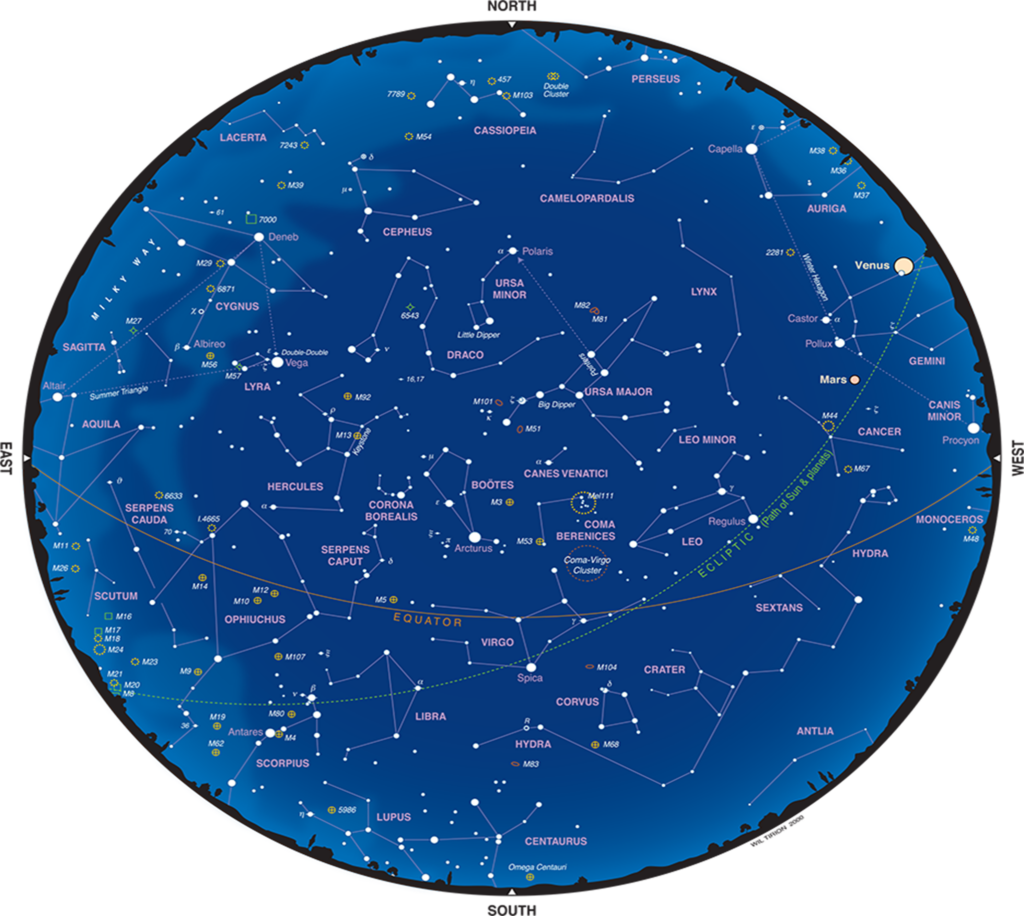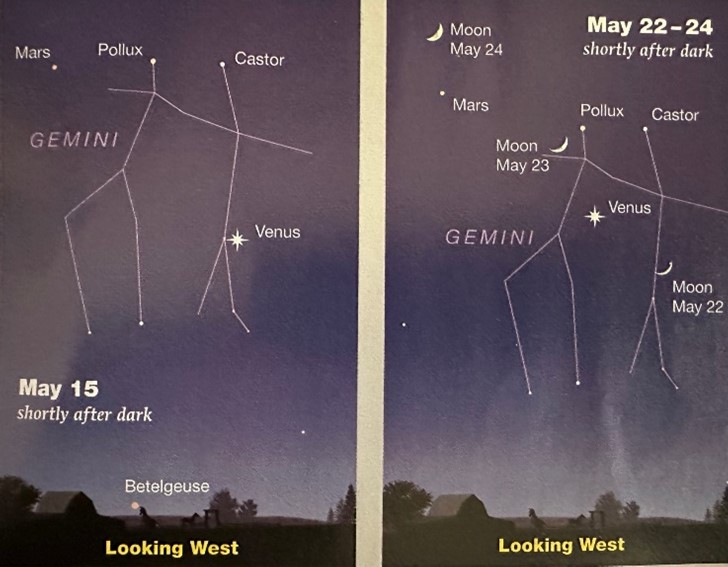May, 2023
by Astronomer Jim

Bright Venus is the dominant bright light in the evening sky this month (other than the moon). Just look to the west at sunset and it’s easy to see! Venus will be about 60% illuminated throughout the month (60% of it is visible) as it goes various phases, just like the moon. As the planets inside Earth from the sun, we only see Mercury and Venus go through moon-like phases. However, strong binoculars are needed to see Venus’s phases and a telescope is needed to see the phases of Mercury.
Bright Venus is the dominant bright light in the evening sky this month (other than the moon). Just look to the west at sunset and it’s easy to see! Venus will be about 60% illuminated throughout the month (60% of it is visible) as it goes various phases, just like the moon. As the planets inside Earth from the sun, we only see Mercury and Venus go through moon-like phases. However, strong binoculars are needed to see Venus’s phases and a telescope is needed to see the phases of Mercury.
Here are some other celestial events this month:
May 6: In the early morning hours, before daylight, the Aquariid meteor shower will occur. The moon being bright in the sky, the meteors will be hard to see, but some should be visible! Possibly some can be seen before midnight on May 5th. Remember, meteors are chunks of rock that are orbiting around the sun and when the earth smashes into one, the meteor becomes visible and plummets down through our atmosphere. When there are lots of chunks all in a small area (likely left by a comet), then we have a meteor shower.
May 15: Mars is far dimmer than Venus, but visible in the early evening, low on the western horizon. On May 15th, during evening twilight, Mar will be visible close Pollux and Castor, the two brightest stars in Gemini (see the star chart). The three will form a “straight line” that will make all three easier to see; all three will be of similar brightness.
On May 24th: The moon’s crescent will be near the Beehive star cluster (discussed last month) and the moon. Binoculars will easily see the stars in the “Beehive.”

Mary 17th: A fun highlight is an “occultation” of Jupiter by the moon. Just before sunrise, at about 4:52 am PDT (but I suggest that you start looking at least 5 minutes in advance of that time), Jupiter will disappear behind the moon! Sunrise will occur at 5:27 am and Jupiter will reappear on the other side of the moon at 5:28 am. With binoculars, you can see Jupiter appearing to approach the side of the moon. Of course, they are never close at all because the moon is circling the earth the entire time and both are over 400 million miles from Jupiter!
On May 23rd: There will be a very interesting configuration that will include two planets, the moon, and two bright stars. Mars will still be aligned almost straight across from Pollux and Castor, but now in between Mars and Pollux will be a crescent moon, and below the moon will be a very bright Venus. This will be a very grand sight in binoculars!
